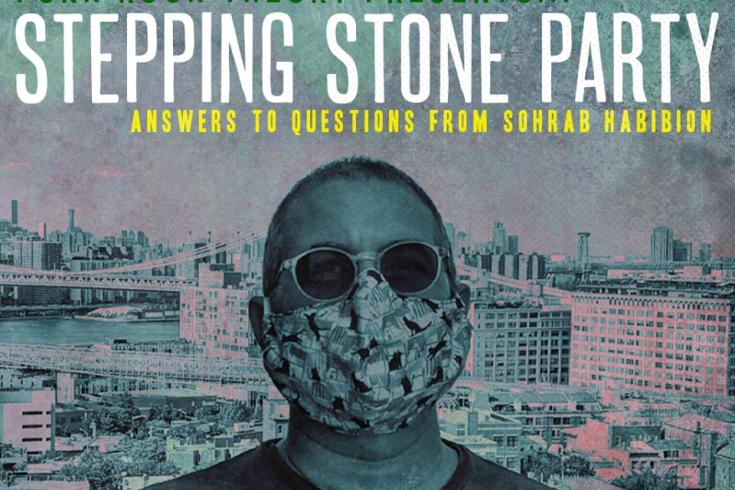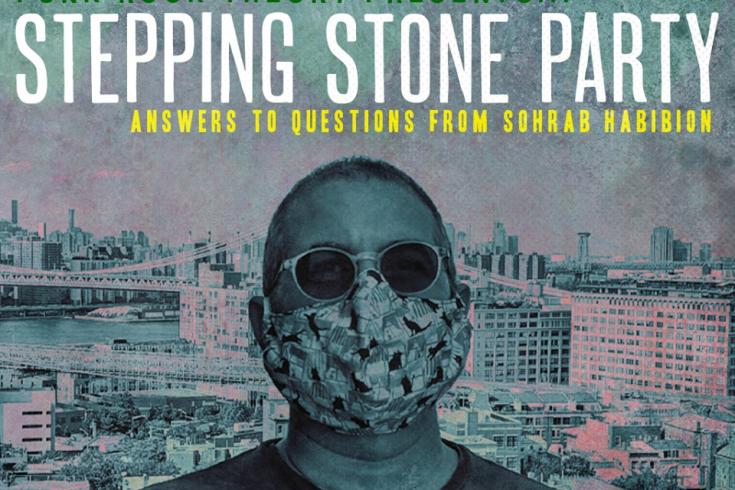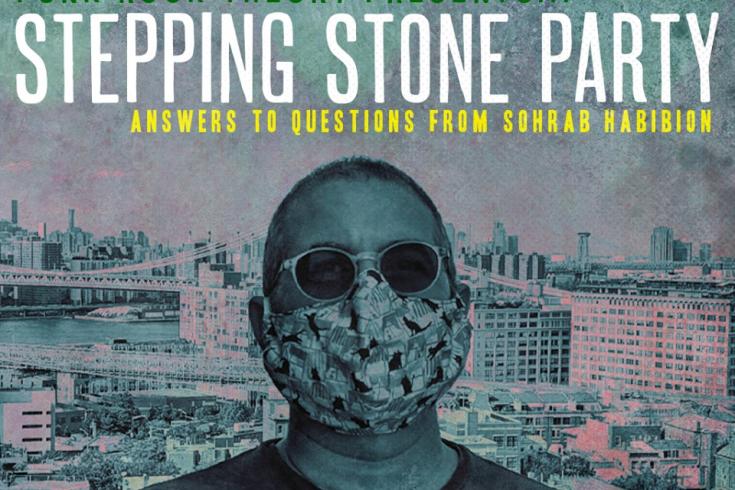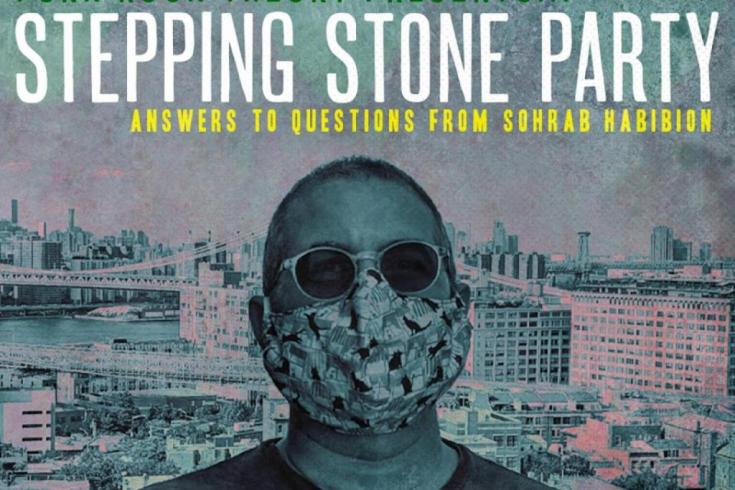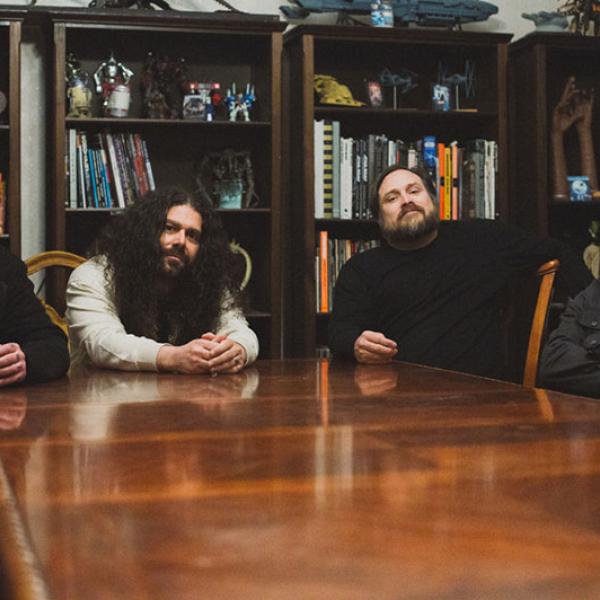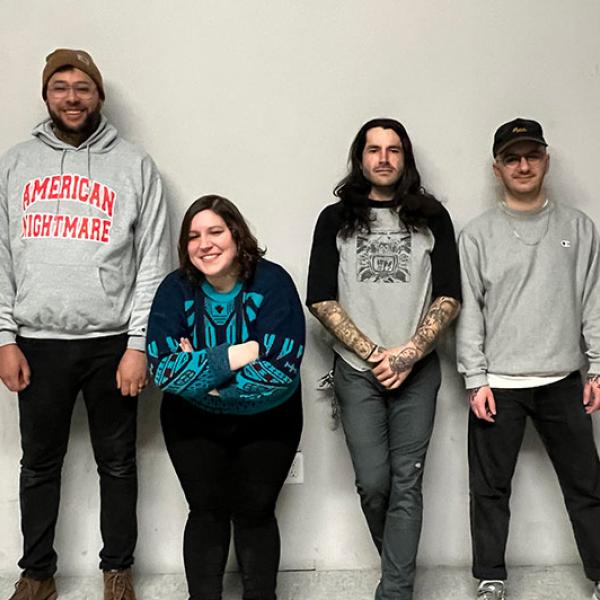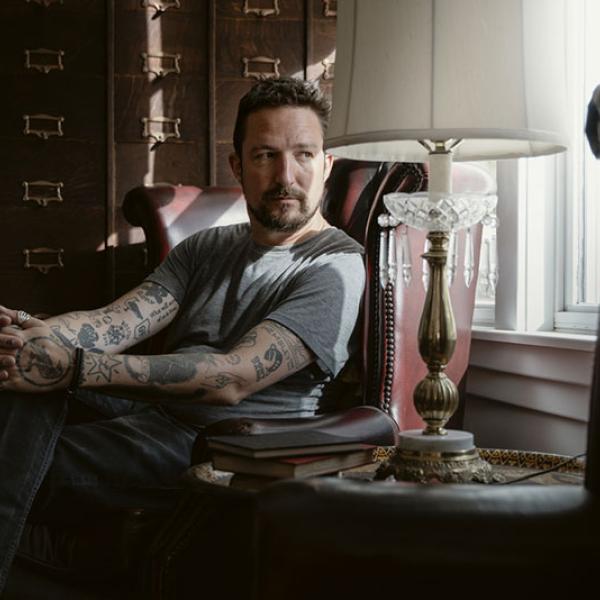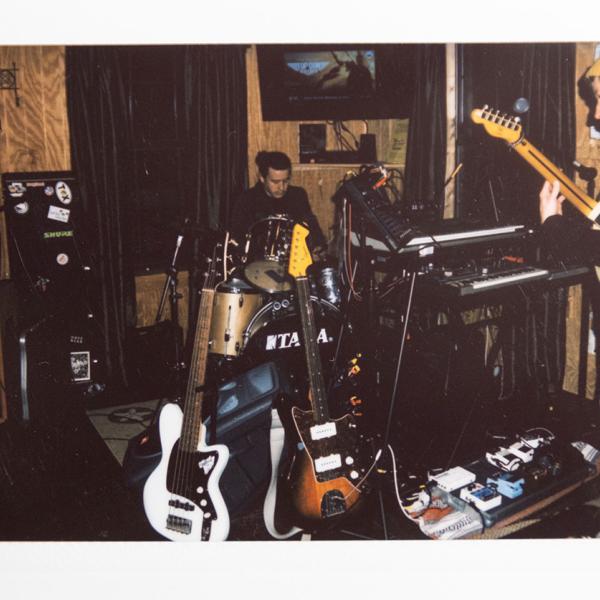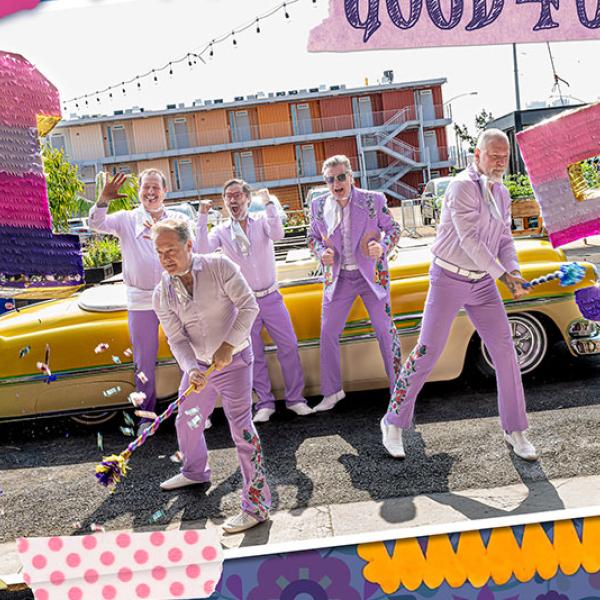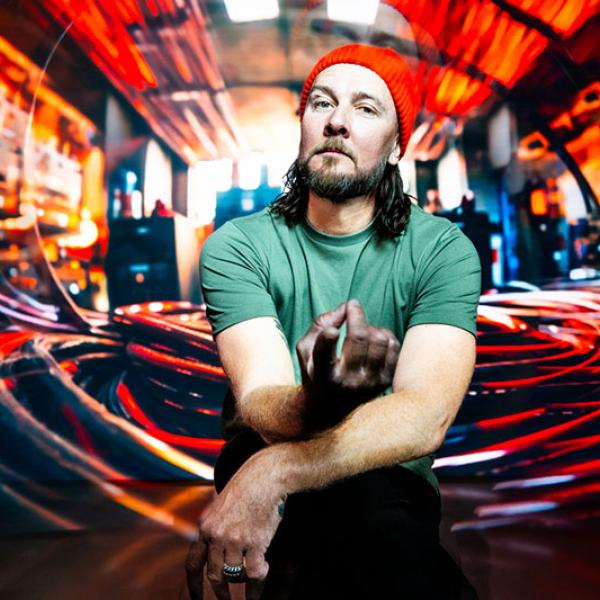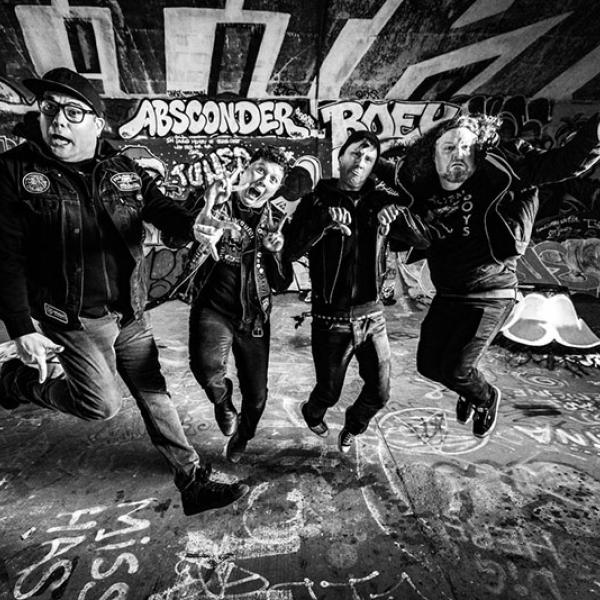Features
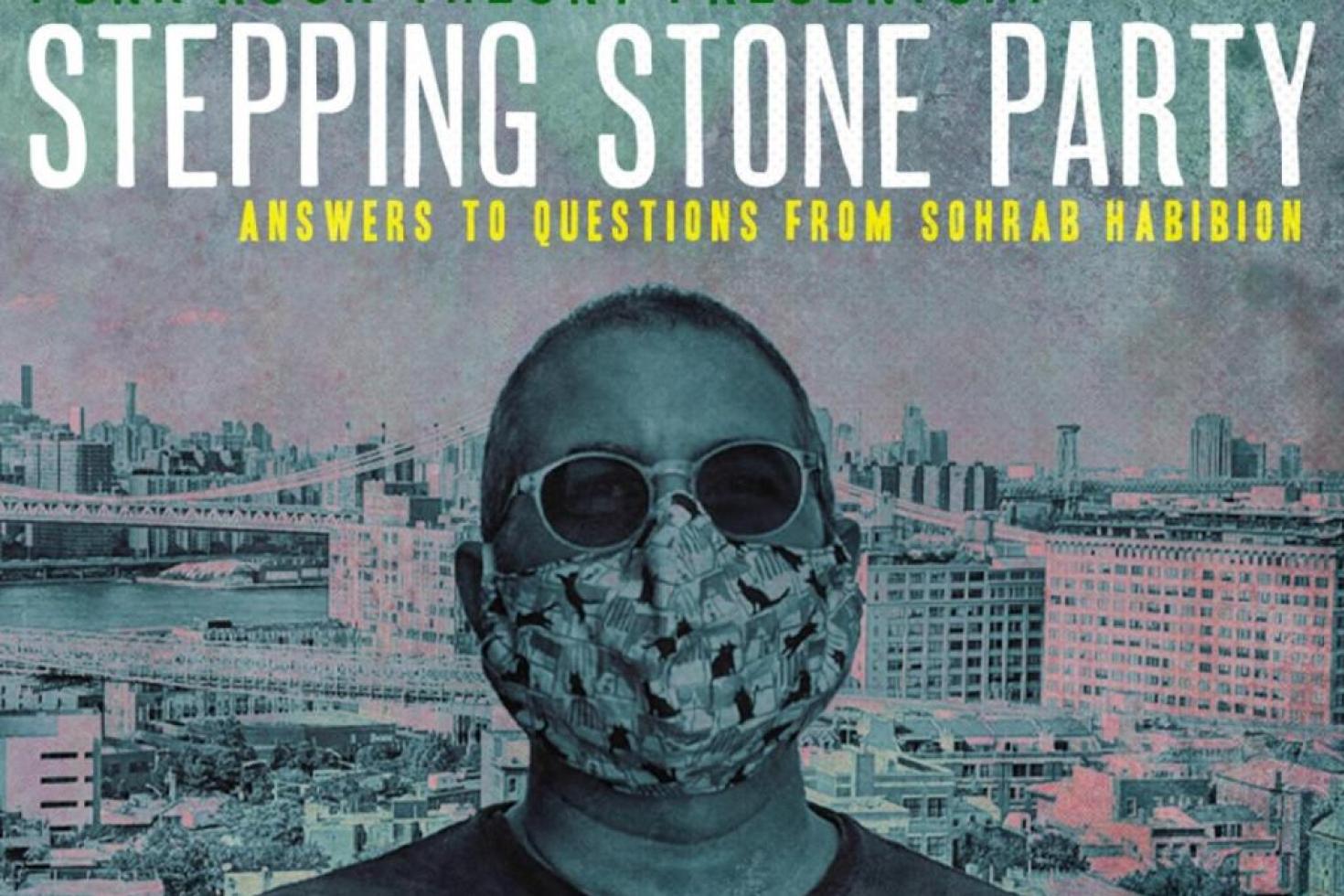
I first met Doug Guillard in Cleveland in the mid-’90s when my band at the time, Edsel, and his band at the time, Gem, played together at the Grog Shop. Or maybe it was the Euclid Tavern? It doesn't matter. I remember liking Gem quite a lot and being excited about the fact that it was the guy from Death of Samantha, who I knew from their tracks on both essential Homestead comps, The Wailing Ultimate (1987) and Human Music (1988), which incidentally were also my introduction to Big Dipper, Phantom Tollbooth, Salem 66, and The Embarrassment, among others. Over the intervening years I noticed Doug pop up in various places, from My Dad Is Dead to Cobra Verde, Guided by Voices to Nada Surf, and all kinds of places in between. His guitar playing is simultaneously rooted in rock’n’roll fundamentals while exploring the various voicing options of the instrument, equally at home supporting a vocal melody or stepping forward to deliver a dexterous solo. Doug isn’t a flashy player, so it can take a minute to realize just what a masterful player he is. I was delighted that he agreed to answer my questions and was not surprised to learn some things along the way. The barre chord is open…
SH: You’re known for playing guitar in a bunch of scenarios that feature a prominent front person, from Bob Pollard and John Petkovic to Bill Fox and Sally Crewe to Matthew Caws and Craig Finn to Neko Case. Do you enjoy that role as the writing partner/arranger/sonic magician, rather than necessarily being the main creative force like in Gem or with your solo material?
DG: I do enjoy it. I guess I’m more inclined toward the main creative force thing but my strengths are well—and possibly best—put to use in the guitar or song-assisting situations.
I really love same-room co-writing, though I haven't had all that much of a chance to do it. I’ve produced or co-produced albums by artist friends such as Eternal Summers and Bye Bye Blackbirds, and that is always great fun.
SH: When you’re involved in Guided by Voices and Nada Surf, how much effort is required to slot back into one or the other after time away? Does each group have a mental mode that you have to switch on or ease into?
DG: When I was playing with both bands, I didn't find it all that hard to shift from one to the other, I guess.
If I ran through the setlist or key parts of songs once before playing a set, I was fine.
Not sure how easy it would be to do now, as Guided By Voices has ramped up our recorded output to at least 2 or maybe 3 albums per year, which is really great, but also that means we are adding new songs every few months.
SH: With Bob Pollard being the main songwriter in Guided by Voices, how did you end up singing two songs on the 2017 album, August by Cake? Will we hear more of your singing on future GBV LPs? How do you decide if a tune is going to work best for solo material or one of the many groups you play with?
DG: On August By Cake, Bob wanted to make it a double album, so he had each band member write and contribute 2 songs each so there would be enough tracks. Right now, the albums are Bob handling all writing and lead vocals.
As it stands, anything I write will probably be fast-tracked to on-deck possibilities for a solo project.
SH: Going back and listening to earlier Cobra Verde records it was immediately obvious that the guitar vocabulary and melodic inclinations of that band aren’t all that different from either Nada Surf or GBV. The group sound changes with each, but they all share a similar central nervous system. It reminds me of dumplings. Manti, samosas and wontons are all basically strips of dough wrapped around a filling of some type. In the spirit of rock’n’roll being the Silk Road of modern music, how would you describe the way the fillings or cooking environment are different between Gem, Cobra Verde, Nada Surf and Guided by Voices? Please feel free to ignore the ridiculous food metaphor.
DG: That's a perfect metaphor!
In Death Of Samantha, Gem, and (my tenure in) Cobra Verde, the basic song structure/germ originated with one writer. In Gem, the songs were a good deal mine, and some Tim’s. In Death Of Samantha and CV, John wrote most, but I would contribute a music bed here and there. I contributed one rhythm guitar/lead hybrid part mostly in those days. If they were my songs I’d usually have 2 or 3 parts. In Death of Samantha, I played mostly leads, but they were still rhythm parts I’d drop out to play leads in basically.
In Nada Surf I came up with parts that complimented Matthew’s main guitar, designed to weave in and out, and also solos if the song called for them.
In GbV, I learn Bob’s main guitar part, lay that down, then think of things to add on top. Not always a solo, but licks here and there or another part with different chord shapes, a lot of the time. There was one album, Styles We Paid For (I think?), where I did lead parts first, then went back later and recorded the main rhythm part. I’ve also done a few tracks per record lately using a baritone. With that I like to play full chords, sometimes higher notes even, so it’s not discernible as a baritone necessarily.
SH: That said, speaking of food, there are almost 6,000 restaurants in Queens, where you’ve lived for at least a decade. When you come home from a tour, what are a few spots you most look forward to hitting?
DG: We don’t go out a whole lot, but there are a few great spots here. The Lowery, Fuyu Ramen, and Philomena’s Pizza come to mind.
SH: Watching the Bambi Kino live videos really brings home what a versatile guitarist you are. How much formal musical training do you have?
DG: I took drum lessons in first grade for a couple years and learned to read drum notation, then played guitar at home by ear, on open tuning mainly, until about 3rd grade, and I took about 3 years of guitar lessons.
I didn’t get very deep into theory and regret not going much further, but was in middle school and high school symphonic and marching bands for drums and percussion, and in the “stage band” on guitar.
SH: I like how Bambi Kino is less about being true to the material than the spirit of the material. It seems to free you from the cliches and restrictions of something like Beatlemania, the musical, or Completely Unchained, the #1 Van Halen tribute band. Given how rabid certain types of music fans can be and how unforgiving criticism of covers can be, you’ve managed to carve out a nice little corner where both the band and audience are having a judgment-free good time. Why do you think that is and do you have any funny stories of situations where it hasn’t gone so well?
DG: Since we mostly play in NYC, we have a core base of fans that know we put on a great, fun show and love to be part of it, and dancing is always encouraged.
Bambi Kino is more of a ‘high concept tribute’ band formed to play only the covers they did while in Hamburg and the Cavern. We definitely do obscure originals they wrote around that ’60-’62 time, like “Cry For A Shadow” and “Ask Me Why.” You would have to know the BBC sessions and Star-Club LP to really know all the material we do, but we throw in some real Mach Schau, some jokes, special guest singers, and the crowd sees us rockin’ it up pretty powerfully.
Last year we digitally released a skiffley Joe Brown and the Bruvvers cover (“What A Crazy World We're Living In”) with premier Beatles scribe Mark Lewisohn on lead vocals!
Most shows are in clubs, such as the original Indra club they first played in Hamburg, and Union Pool, Union Hall, and years ago had a residency at Bowery Electric, where we hosted “Reeperbahn Nights” in tandem with burlesque dancers. We’ve played The Fest For Beatles Fans a couple times and someone’s backyard in the Hamptons, and it's always gone pretty well.
But we were hired once to play a birthday party at a club in Hamburg for someone’s friends and family of all ages with the 2011 version of legendary British ’50s revival band Showaddywaddy. It went just fine and we played out usual sets, but near the end there were shouted requests, the loudest of which was “countwy wooads, countwy wooads!” Luckily a friend from our German label was backstage with us and relayed the fact they were clamoring for “Take Me Home, Country Roads” by John Denver, so, we went back up in an encore and started into it.
SH: When I read that you’re a fan of The Pretenders’ James Honeyman-Scott, it made perfect sense. However, to my ears, your playing also has echoes of Mick Ralphs from Mott the Hoople. It can be riffy and dense, then swiftly switch into something much more lithe, always sure of the rhythm and aware of leaving room for the vocals. You’re credited as “lead guitar” quite a bit, but your playing is very sympathetic to singers. Like James Honeyman-Scott and Mick Ralphs, who are some under-appreciated guitar players that you like?
DG: Thanks a ton. Lots of obvious big ones for me: Ronson, Townshend, Richards, Harrison/McCartney, etc. Then Frampton and Buckingham. But as far as under-appreciated guitarists, I’ve liked Tony McPhee from The Groundhogs since I stumbled onto their albums in the record library at the college station where I had a show. Really great playing and odd riffs, though they are pegged as a blues band, I love their more psychedelic material. As a preteen it was Elliot Easton for me, for sure, then James Honeyman-Scott. But as a late teen and onward I really loved Robert Quine and the playing of John McGeoch—especially his Siouxsie tenure—and Geordie of Killing Joke for the dissonant, beautiful riffs he came up with. Johnny Marr had a big impact, too. Also, in the early ’80s, someone gave me some Be Bop Deluxe records with Bill Nelson’s playing, which is great. There was Pat Place, Robin Guthrie, Karl Precoda, and Rew/Hitchcock. James Burton and his work on Monkees and Ricky Nelson’s stuff—sibs’ records I inherited as a kid, though I didn’t know who it was playing, of course. There was an early ’60s Lonnie Mack 45 in the family that was chock full of great licks and solos. I suppose a fair amount of Davey Johnstone seeped in, I dug Andrew Gold’s work on the Linda Ronstadt hits, and Ian Bairnson from Pilot was a guitarmony pioneer, and as good as anyone else at composed melodic leads.
SH: Is the black Les Paul your main guitar? Do you pick other guitars for different recording projects? Do you find you write differently depending on the guitar you’re playing?
DG: Yes, the black Les Paul is still the main one I use. I have a 1967 Gibson ES-330 for Bambi Kino, but I love recording with that in any project, especially Guided By Voices. I think I do write differently depending on the guitar that’s handy.
I used to write on the nylon string a lot, and that elicits a very different feel and type of song. I like writing on a baritone as well. I’ve had an Eastwood for several years.
SH: I’ve had a few SGs over the years. The current one I have is fine and pleasantly reliable, but I had one in the late-’80s that was incredible, which I regret selling, and another that was a complete dud—the G string was constantly going out of tune, the intonation was never very good, and the neck was chunky and awkward. Do you have a “worst guitar” that you held onto despite itself? Do you have any guitars that have revealed themselves to be much better than you remembered after years of sitting in a case?
DG: I have a Hofner Verythin I got in Hamburg in 2010 that looks great, but the pickups seem to be too muddy or cheap. I think if I replaced them it’d be fine. I also have an SG I got at a “big store” some years ago that was not a top-of-the-line model, has factory P-90s in it but doesn’t look too bad. I keep it around as a tour spare, and have used it in recordings even. I think with any SG they’ll have intonation problems, and if you grip hard like I do, they pull sharp on the first few frets. But, I probably won’t part with it!
SH: There’s a crazy amount of incredible music from Ohio which, thanks to comps from the folks at Killed By Death and Soul Jazz, bands like The Bizarros or Mirrors or The Defnics can finally be heard by folks outside of the Sixth City or the Rubber Capital of the World. What are a few Ohio rock’n’roll jewels that your former-college-DJ self would insist we need to hear?
DG: Defnics ruled! (Shout out to Bob Sablack and Bill DiGidio!) Man, there were a lot, of course. 7”s by Pressler-Morgan and Andrew Klimek are great. I was in a guitar duo ages ago with Andrew that played out a few times. The Easter Monkeys, The New Hope comp. from 1983, The Hotel Cleveland compilations on Scat, Home and Garden—a band that featured Scott Krauss, Tony Maimone, Jim Jones, Jeff Morrison, Robert Wheeler and Michelle Temple, Cruel Cruel Moon, The Wombats (the Cleveland one with records on Voxx and Homestead ’84-’86). Club Wow was a great post-Dead Boys Jimmy Zero rock/pop band from ’79 and has a reissue comp. out. (their Neighborhoods’ “Prettiest Girl” cover is aces) May be hard to find, but there should be lots of cassettes and a few albums by the prolific Fuzzhead.
SH: What’s your favorite Durutti Column album?
DG: I’d have to say LC. I do like Without Mercy because Blaine Reininger plays violin on it, but LC is just the best one.
SH: What’s your favorite Magazine song? Can we agree that the 7” version of “Shot by Both Sides” is superior to the album version?
DG: Yes! I agree with that. I would probably have to say “Song From Under The Floorboards,” but “Shot” may be a close second. It has the best elements of McGeoch and Adamson.
SH: What My Dad Is Dead recordings have you been on? Do you have a favorite My Dad Is Dead record?
DG: I toured with MDID a couple times around 1990 and accompanied Mark on maybe one of his first ever live shows in ’85 (?), but the only album I ended up playing on was Chopping Down The Family Tree. In that live lineup Mark had me on drums for half the set and guitar the rest—he would then play drums and sing from behind the kit.
My favorite is either Let’s Skip The Details or The Taller You Are, The Shorter You Get.
SH: Some of your older music, like with Gem and Death of Samantha, are out of print and not available on streaming services. Are there plans for that to change?
DG: We re-recorded a lot of the Death Of Samantha songs in 2011 because we really don’t know where the master tapes are! Or so I am led to believe. But I think it would be grand to be able to reissue those original DoS recordings. I am extremely proud of them, and John Petkovic really worked his ass off to try to make things happen for that band at the time. I would definitely love to reissue some Gem stuff. I may look into what’s possible with that, and thanks for the interest!
SH: Current or forthcoming projects?
DG: We have the Guided By Voices album Strut Of Kings out soon.
I appear on a couple solos and more on the brand new album from Valley Lodge, which is comedian/guitarist Dave Hill’s project.
I'm on the new Gramercy Arms LP, The Making Of The Making Of, on bass and guitar on a Scott Miller (Game Theory) cover featuring Jules Verdone.
Since before the pandemic I’ve worked on a few projects helmed by Cleveland’s Matthew Wascovich (Scarcity Of Tanks) on his Total Life Society label. Matthew is the lyricist/vocalist for various bands he assembles, gathering musicians to write and record the music. Of these, I’m on pending releases by Flowers Destroy, Tramp And The Parasites, Century Whip, and Scarcity Of Tanks, with collaborative members including Brendan Canty, Dez Cadena, James McNew, Raul Morales, Jonny Bell, Norm Westberg, Nels Cline, Mike Watt and Don Depew. It's been fun to do. Not sure when they are due out, but Wasco has been really busy as of late.
Several years ago, there was a posthumous Scott Miller tribute album under the name Game Theory called Supercalifragile, low-key released in 2017 and may possibly see a re-release soon. A few artists were tasked with assembling bits of Scott’s voice memo ideas for unfinished and half-written songs, coming up with lyrics and music where needed, and fleshing them out. It was tough, and a bit haunting to do, but the result was good. The song I completed is called “Say Goodbye,” and I could only make out a couple chords in the voice memos. Most were just lyric ideas with no accompaniment, so I had to develop a song with a Game Theory mindset. Travis Harrison played drums and engineered it, and Peter Buck added some mandolin. It can currently be heard on Bandcamp.


